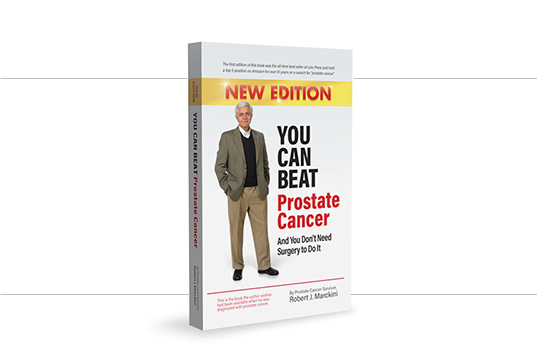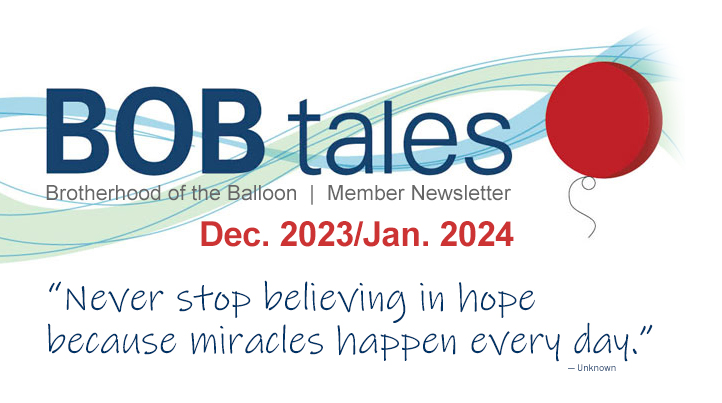
Dear Members (a note from Deb Hickey):
I just sat down and prayed for you. I humbly asked that He restore your eyes to health again. If anyone deserves it, it’s you and your father. For all the times you’ve put everything aside and selflessly given to us, I offer my prayers for you.
I wasn’t sure that “exposing” my health condition to thousands of (mostly) strangers was what I wanted to do. But my father strongly encouraged me to do so, because he wholeheartedly believes that the miracle we received 10 years ago – when my husband Mark was miraculously healed of stage 4 metastatic pancreatic neuroendocrine cancer (when we were told by doctors he had just weeks to live) – was the result of the prayers of thousands of members, friends, and strangers.
In the June 2014 issue of BOB Tales, my father included a request in the opening letter for our members to pray for Mark’s healing. We received hundreds and hundreds of responses. One of our members, a pastor, had 100,000 followers on Twitter and nearly the same number of fans on Facebook. His extensive ministry also included a training center for pastors, a year-round camp, a center for biblical counseling, a disaster-recovery organization, and a Christian school. In his response to my father’s request, he promised he’d issue a plea to all his followers, colleagues and friends to pray for Mark.
Our local priest dedicated a mass to Mark and we later had cards, letters, gifts and freshly prepared meals from parishioners arrive on our doorstep shortly thereafter. Every single note offered prayers for Mark. One parishioner put coloring books and crayons for our daughter in our mailbox. She continued to do so every week for months.
Our friends at Loma Linda University prayed for Mark and asked their church, colleagues, friends and family to pray as well.
My father believes in miracles, and after what happened with my husband, I believe as well. I can’t come up with any other explanation for Mark’s healing and neither can his doctors.
Oh, and that message above… It’s from one of our members. It’s an example of the hundreds of thoughtful and compassionate emails I received following my father’s opening letter in last month’s newsletter. In addition to messages of care and concern, many of you shared similar health struggles and others recommended physicians they thought may be helpful to me.
I deeply appreciate all the messages. Many made me tear up, and a few made me cry – like, grab a roll of toilet paper cry. What a group we have. Thank you.

In this issue of BOB Tales, we begin with an exciting summary of the fall 2023 American Society for Therapeutic Radiology and Oncology annual meeting where experts in the field of particle therapy reported on several proton therapy clinical trials under way, and why FLASH proton therapy is being referred to as a “potential major disruptor” in radiation therapy. We also share the results of two new studies on the benefits of adopting a Mediterranean diet and which nutrients are most important for lowering the risk of prostate cancer. There’s also an important new study that found that black men are more likely to have prostate cancer than white men at the same PSA levels. This is significant, as both black and white men are typically screened using the same criteria. Find out what screening process changes the experts suggest.
Our “Flashback” article this month continues our four-part series on male osteoporosis. We also have a very special featured member who turns 90 years old this month – a Brazilian pastor who traveled around the world for more than 30 years sharing his love for God.
And finally, we include details from two new studies on the importance of exercise. The first suggests cardiovascular fitness may lower the risk of dying from prostate, lung and colon cancers – some of the most common cancers in men. For the second study, researchers investigated the most effective combination of exercises to stay healthy and increase longevity.
As always, we welcome any suggestions you have on improving the value of the BOB Tales to our members. Please send your feedback to [email protected].
Deb Hickey
*To print the BOB Tales newsletter or view the newsletter with a larger font size, click here for the PDF file.

- 'Proton Therapy on Upward Trajectory While FLASH Treatment Schemes Get Ready to Shine'
- Mediterranean Diet May be Ultimate Weapon to Fight Prostate Cancer
- Black Men Have Higher Risk of Prostate Cancer at Any PSA Level
- Male Osteoporosis: A Four-Part Series: Part III
- Happy 90th Birthday, Pastor Leo!
- Cardio Exercise Linked to Lower Cancer Death in Men
- Pair Two Exercise Types to Live Longer

'Proton Therapy on Upward Trajectory While FLASH Treatment Schemes Get Ready to Shine'
Physics World magazine is a publication of the Institute of Physics. This journal publishes articles on all areas of physics, pure and applied, particularly relating to emerging and breakthrough technologies. On October 24 the journal published an article on particle therapy titled, “Proton Therapy on Upward Trajectory While FLASH Treatment Schemes Get Ready to Shine.” The article summarized information presented at the fall 2023 American Society for Therapeutic Radiology and Oncology (ASTRO) annual meeting, an event that focused heavily on advances in proton therapy, including MR-guided adaptive radiotherapy, combined immunotherapy-radiotherapy approaches, stereotactic treatments for oligometastatic disease, and FLASH proton therapy, which we’ve written about in past BOB Tales newsletters.
Even with 43 operating proton centers in the U.S. and 13 others under construction, the author points out that clinical innovation in using proton therapy for treating cancer, “is just getting started,” as was noted at the ASTRO conference.
Dr. James Metz, chairman of radiation oncology at U. Penn. commented at the conference about the unique ability of the proton particle to precisely target a tumor. He noted that the proton beam releases minimal radiation while traveling to the tumor and delivers essentially all of its cancer-killing power at the tumor site.
“Protons release all their energy at a point and then they stop,” Metz said. “Protons give us the opportunity to reduce dose to normal structures, to combine with chemotherapy and immunotherapy, and to increase (radiation) doses going forward.”
Metz commented on a number of clinical trials under way treating lung, esophageal, liver, head-and neck, and brain cancers, with pragmatic trials under way for treating breast cancer and prostate cancer.
Flash Proton Therapy – The Disruptor
We’ve reported in the past on hypofractionation proton therapy, where higher doses are administered over a smaller number of treatments. Early hypofractionation clinical research was focused on reducing treatments roughly in half. More recently the number of fractions (treatments) has been reduced even further. Proton SBRT (stereotactic body radiation therapy), as an example, is being administered in only five treatments.
FLASH proton therapy is considered to be “the next big thing” in proton therapy. With FLASH proton therapy, ultra-high doses (60-80 Gy) of ionizing radiation are delivered in a single dose.
Researchers report in preclinical studies that, “FLASH radiotherapy is less toxic to normal tissues and is as effective as conventional radiotherapy in destroying tumors.”
Still in the experimental stage, FLASH proton therapy is being referred to as a potential major disruptor in radiation oncology, “bringing together biology and technology in new ways … and turning radiobiology on its head,” Metz said.
The upsides of FLASH proton therapy are quite obvious: significantly reducing radiation treatment times, maintaining quality of life, and reducing toxicity levels and side effects.
Researchers believe FLASH radiation therapy “can also trigger different immune pathways and gene expressions, creating novel opportunities for drug and radiation combinations.”
Dr. Metz, however, adds a cautionary note, saying that FLASH proton therapy is not yet “ready for prime time.”
Much more work must be done by highly resourced treatment centers to complete the necessary research and clinical trials, he reports.

Mediterranean Diet May Be Ultimate Weapon to Fight Prostate Cancer
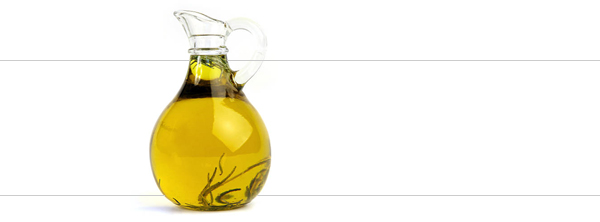
Men who eat a primarily Mediterranean diet have a lower risk of being diagnosed with prostate cancer, according to two studies from the University of South Australia. Researchers found that the variety of micronutrients in the diet can also aid in patients’ recovery from radiation treatment. The studies, one focusing on diet and prostate cancer risk, and the other examining levels of lycopene and selenium in patients undergoing radiation therapy, are published in the journal, Cancer.

The Mediterranean diet is a primarily plant-based eating plan that includes lots of vegetables, fruits, beans, lentils, nuts, and whole grains. The diet may also include a moderate amount of fish and a small amount of poultry. With an emphasis on healthful fats, such as olive oil and avocados, the Mediterranean diet is flexible depending on the individual’s preferences.

Researchers compared micronutrient plasma concentrations in men with prostate cancer with a healthy control group. Results showed that low levels of specific micronutrients – lutein, lycopene, alpha-carotene, and selenium – were linked to an increased risk of prostate cancer and increased DNA damage after radiation exposure.
- Foods rich in lycopene include red fruits and vegetables like tomatoes, melons, grapes, watermelons, and cranberries.
- Foods rich in alpha-carotene include orange, yellow, and green colored fruits and vegetables like carrots, pumpkin, yams, and sweet potatoes.
- Foods rich in selenium include seafood, brazil nuts, eggs, and nuts.
“Our recommendation is to adopt a Mediterranean diet enlisting the help of a dietitian because people absorb nutrients in different ways, depending on the food, the digestive system, the person’s genotype, and possibly their microbiome,” says Permal Deo, Ph.D., the study’s co-author.
There are other prostate cancer risk factors such as ethnicity, family history, and age. Additionally, researchers have found an association between certain diet-related molecules found in the gut with aggressive prostate cancer. They suggest that dietary interventions may help reduce the risk of high-grade disease.
Continued research in this area is planned. Researchers hope these molecules can be used as early biomarkers of prostate cancer. This would help identify patients who can decrease disease risk by making dietary and lifestyle changes.

Black Men Have Higher Risk of Prostate Cancer at Any PSA Level
Urology Times reported on a new study published in the journal Cancer that showed black men are more likely to have prostate cancer than white men at the same PSA levels. This is significant, as both black and white men are typically screened using the same criteria. The study, which included 75,295 black and 207,658 white male veterans, determined that when screened by conventional standards, “55 percent of black men were found to have prostate cancer upon initial biopsy, compared with 43 percent of white men.”
“These findings suggest that to reduce health disparities for veterans in the prevention of prostate cancer, clinicians should consider an individual veteran’s risk for prostate cancer including factors such as race and age. Clinicians may consider earlier screening for populations at greater than average risk, which includes black men,” said first author Kyung Min Lee, PhD.
Researchers also found that in comparing black and white men with the same pre-biopsy PSA of 4.0 ng/mL, black men had a 49 percent risk of prostate cancer compared with a 39 percent risk for white men. Another way to look at this is to say that black men with a pre-diagnosis PSA of 4.0 were at the same prostate cancer risk level as white men with a PSA of 13.4. Both urologists and patients should be aware of these important findings.

We’ve been producing BOB Tales newsletters for more than 22 years. During this time we’ve published articles that many new members haven’t seen, and some older members may have forgotten. So, we periodically re-run articles from past BOB Tales. The following important article, from July 2007, is the third in a four-part series written by a prominent and learned member of our group. It’s a topic all our members should pay close attention to. This series, published 16 years ago, is as timely today as it was then.
Male Osteoporosis: A Four-Part Series
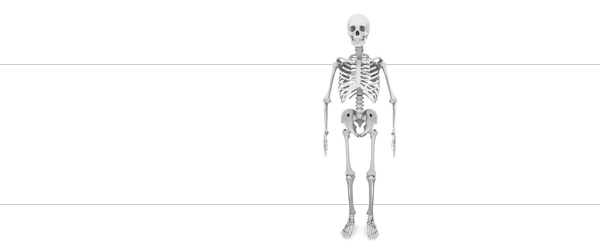
The following was written by BOB member Herbert Klein, M.D., PhD. The more Herb researches the subject the more he learns and the more he wants to pass on to his “brothers.” All men (and women) should pay attention to bone health, especially as we get older, but prostate cancer survivors should pay even closer attention to osteoporosis and vitamin D as Herb explains. Following is part III:
Part III
Key points:
- Sunshine promotes vitamin D synthesis in humans, but supplements are often needed.
- Vitamin D may fight not only bone weakness but also prostate cancer; however, authorities differ as to whether one should strive for a high normal serum level of 25-hydroxy vitamin D or just a comfortably normal level.
- Recently, an article by Dr. Michael F. Holick in the New England Journal of Medicine and a conference at the National Institutes of Health have highlighted the timeliness of the subject of vitamin D.
Reviewing the ABCs of vitamin D, in the skin, 7-dehydrocholesterol, a natural substance, is converted to vitamin D3, under the influence of sunlight. In the liver, this is converted to 25 hydroxyvitamin D3, which in turn, is converted in the kidneys to 1, 25 dihydroxyvitamin D3. Besides being what your skin can make, vitamin D3 is the recommended dietary supplement. 25 hydroxyvitamin D3 is the form that should be measured in serum, and 1, 25 dihydroxyvitamin D3 carries the biological activity of the vitamin and is also likely the major cancer-fighter. (There is some evidence that 25 hydroxyvitamin D3 fights cancer too.)
How is one to sustain a healthy level of vitamin D? Well, some foods contain vitamin D, and sunshine on the skin boosts it. However, not all of us are so fortunate as to live in sunny places like Loma Linda, nor do our habits always get us a lot of sunshine or the best food sources. I do not mean to shortchange the utility of sunlight, but anyone’s personal formula for using it to meet his or her vitamin D needs will depend on several factors, including geography (i.e. latitude), seasonal considerations, age, skin color, and concern about sun-induced skin cancer. Dr. Michael F. Holick has estimated that a dark-skinned individual living in Anchorage can generate about 1,000 IU of vitamin D in 20 to 30 minutes midday in July without risking sunburn, whereas a pale person in Honolulu might do it in 1 minute. Sunscreen decreases the absorption of the necessary rays. I am prompted to make another generalization: In such matters, one size rarely fits all. For many folks, sunshine is not a total answer, even with food sources added, and therefore supplements are needed.
I previously made note of the evidence that vitamin D fights prostate cancer and has numerous other health benefits as well. Dr. Donald Trump, whose article I mentioned, recommends that all prostate cancer patients ask their doctors to measure their 25 hydroxyvitamin D levels and oversee supplementation to assure blood levels are at least in the normal range. This means (according to the reference of my first installment) at least 32 ng/ml.
For prostate cancer patients, there is not complete agreement on the target level or on the dose that one should take to achieve it. (Remember that my reference was about men in general, not prostate cancer.) Some authorities assert that patients should aim for a serum 25 hydroxyvitamin D level in the high normal range, as much as 70 ng/ml, and should take thousands of IUs of vitamin D3 daily, if necessary, to achieve it. A different view is presented in Dr. Patrick Walsh’s Guide to Surviving Prostate Cancer, 2nd Edition, where the well-known prostate surgeon advocates taking no more than 800 IU daily (although he does not specify a target serum level). He is concerned about the possibility that high levels will nullify the effect against prostate cancer. In any case, going much above the normal range carries a risk of actual vitamin D toxicity, including possible heart and kidney damage.
On a personal note, I recently discovered a vitamin D problem after first being screened for osteoporosis. As a 71-year-old man, I had enough reason to be screened, but, in fact, I underwent bone densitometry because I had become shorter over the years! Loss of height is a tip-off for possible osteoporosis. The result? I have osteopenia – low bone density, creating a fracture risk, but not bad enough to be called osteoporosis. Because of that finding, I had my serum 25 hydroxyvitamin D level measured and it was only 27 ng/ml! Now I am taking more vitamin D3 and paying attention to my calcium intake too, in order to normalize my 25 hydroxyvitamin D level and strengthen my bones. I am glad that I had both tests, especially the 25 hydroxyvitamin D level. A long-standing low vitamin D level not only may have caused my osteopenia but might also have predisposed me to developing prostate cancer! If only I had known! But, of course, there’s no use crying over spilled milk, missed sunshine, or neglected vitamins. One should just do better in the future.

Here’s why I think that you may be hearing more about vitamin D. Just two months ago, the prestigious New England Journal of Medicine carried an article, “Vitamin D Deficiency,” by Dr. Holick, highlighting the widespread nature of this problem. And earlier this month, the Office of Dietary Supplements of the National Institutes of Health held a public conference called “Vitamin D and Health in the 21st Century – An Update.” To paraphrase an advance notice in the Federal Register:
Even as its importance to health expands, concerns about the sufficiency of vitamin D in the population are growing. A goal of the conference will be to evaluate the efficacy and safety of vitamin D across the life cycle. It will include the findings of the evidence-based review on vitamin D which has been under preparation by the government’s Agency of Healthcare Research and Quality.
Stay tuned!
In the next and final installment, I will discuss the issues surrounding the best method to measure bone mineral density.
Happy 90th Birthday, Pastor Leo!
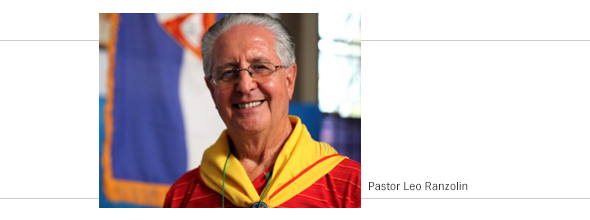
BOB member Leo Ranzolin was born in Southern Brazil on Dec. 5, 1933. He graduated from Brazil Adventist College in 1954 and subsequently started his pastoral ministry with seven churches in the state of Parana.
Leo married Lucila Braun Rabello on Feb. 20, 1956. Lucila was the daughter of the pioneer of the Voice of Prophecy, the first religious program on the radio in Brazil in 1943.
After graduating college, Leo decided to further his education in the U.S. In April 1956, he and Lucila moved to Glendale, CA. While there, Leo attended La Sierra College, Potomac College, and Andrews University while Lucila worked at the old Loma Linda Hospital.
A few years later, the two had three sons, and the family moved back to Brazil in 1965. There, Leo worked for another five years in Youth Ministry.
In 1970, the family moved back to the U.S. and Leo attended the World Conference of the Church in Atlantic City, NJ. He was elected Associate Youth Director Worldwide and served from 1970 to 1980. Ten years later, he was elected Head of the Department. In 1985, Leo was chosen to serve as liaison for Latin America. In 1990, he was elected as one of the six vice presidents.
As a vice president, Leo was the adviser to three departments and one of them was Health Ministries. During this time, he met Dr. Richard Hart, former Chancellor and Chief Executive Officer at LLUH (now President).
For 33 years, Leo traveled around the world. He was in excellent health and attributed that to being a vegetarian. But in 2010, a routine check-up raised a red flag, and his doctor recommended he see a urologist.
A biopsy was done shortly thereafter. While visiting his son in Roanoke, VA, Leo received word that he had prostate cancer. The news was devastating, but he knew what to do. His youngest brother had gone through proton treatment in 2000 and was doing very well. So Leo called Dr. Hart and asked him for advice. Dr. Hart suggested that Leo send his test and biopsy results to LLUCC.
Fortunately, both Medicare and the church’s supplement insurance covered proton therapy and in September 2010, Leo had his first treatment. Two months later, he celebrated his graduation.
“The camaraderie among the other patients going through proton treatment and the LLUCC staff was wonderful,” Leo said. “Loma Linda’s philosophy, to ‘Make Man Whole’ changed my life. It was not just the treatment – patients were encouraged to pursue a new lifestyle. So, not only did proton therapy treat my cancer and give me a better quality of life after treatment, I’ve learned to exercise more and consume a special regimen of fruits, nuts and vegetables.”
Leo turns 90 this month! He tells us he’s still a vegetarian; he drinks lots of water; his PSA remains low; and overall, he’s enjoying excellent health.
Sadly, Leo’s wife Lucila passed away earlier this year. They were married for 68 years! It hasn’t been easy without Lucila, but fortunately Leo has three sons, four grandkids and one great-grand son to keep him busy.
Leo recently sold his house in Estero, FL, and moved to Linda Valley Villa in Loma Linda, CA! His son Dr. Leo Ranzolin Jr. is the Dean of the Dept of Religion at Loma Linda University Health.
“My thanks to Bob Marckini for proton treatment information he provided, and the leaders of Loma Linda who pioneered proton therapy and had the vision to also make man whole!”
Estate Planning: Words of Wisdom
The following was written by BOB member Ron Hendricks, director of gift planning for Trinity Western University.
A Final ‘Thank You’ Gift
We all desire significance – to lead happy and fulfilled lives surrounded by family and friends. For many of us, there’s a compelling need to make a difference that leads us to ponder our legacy. What kind of legacy will you leave? A gift from your estate is perhaps the easiest and most tangible way to leave a lasting impact on the people and organizations that mean the most to you. A bequest is one of the easiest gifts to make. With the help of an adviser, you can include language in your will or trust specifying a gift to be made to family, friends, or charity as part of your estate plan.
An estate gift may be made in several ways:
- Gift of a dollar amount
- Gift of a percentage of your estate
- Gift of a specific asset
- Gift of the remainder of your estate
One benefit of a charitable gift is that it enables you to further the work of God’s kingdom long after you’re gone. A charitable gift can also help you save estate taxes by providing your estate with a charitable deduction for the value of the gift. With careful planning, your family can avoid paying income taxes on the assets they receive from your estate. Because of the taxable nature of retirement funds they’re often the best gift to your charities, but may be the worst gift to your children. This type of gift is most often done through a beneficiary designation.

Loma Linda received a sizable gift from the estate of one of our members last month. This is one of many estate gifts left to Loma Linda by our members over the years. Dozens of members have told us they’ve included Loma Linda in their estate plans. And when we hear this, it warms our hearts.
Bob and Deb have included Loma Linda in their estate plans as well. We believe it’s an easy way to say “thank you” – Bob, for the treatment he received that saved and preserved the quality of his life, and Deb, for the treatment that kept her Dad around for decades after his diagnosis. She’s also exceptionally thankful that the Brotherhood of the Balloon “ministry” was born as a result.

Giving Options
-
Online: Donate here. From the pull-down menu, choose where you’d like to direct your gift — 1) Proton Research through the James M. Slater Chair, 2) Proton Research through the Robert J. Marckini Chair, or 3) choose “Other” and specify “Cancer Center Vision” or another area where you’d like your gift directed in the space provided.
-
By Check: Make your check out to “LLUCC.” Specify where you’d like to direct your gift in the memo line — 1) Slater Chair, 2) Marckini Chair, 3) Cancer Center Vision or 4) write “unrestricted” so LLUH can use it where it’s needed most. Mail your check to: LLUH, Office of Philanthropy P.O. Box 2000, Loma Linda, CA 92354.
-
By Phone: Call Regina Joseph at 909-558-5010.

Cardio Exercise Linked to Lower Cancer Death in Men
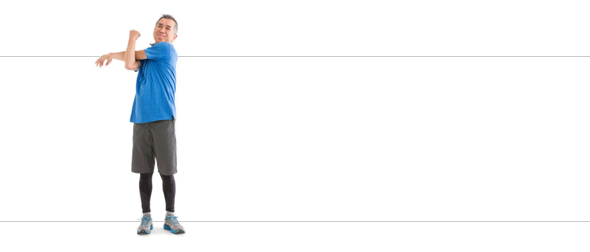
A new study suggests that cardiovascular fitness, or aerobic exercise, is associated with a lower risk of dying from prostate, lung, and colon cancers — some of the most common cancers in men.
A team of researchers from The Swedish School of Sport and Health Sciences analyzed data on nearly 178,000 men between the ages of 18 and 75 for nearly 10 years. All the men completed an occupational health assessment between October 1982 and December 2019. As part of the assessment, the men used a stationary bike for six minutes while doctors registered their blood oxygen levels as they pedaled. The men were subsequently separated into four groups ranked from lowest to highest cardio fitness.
Researchers also assessed the men’s health according to their body mass, height, and self-reported lifestyle habits, and each took part in an in-depth interview with a health profile assessment coach.
The data revealed that moderate and high cardiovascular fitness was associated with a lower risk of colon cancer. Low, moderate, and high cardio fitness was associated with a lower risk of dying from prostate cancer, while only high cardio fitness was associated with a lower risk of dying from lung cancer.
“The clinical implications of these findings further emphasize the importance of CRF (cardiorespiratory fitness) for possibly reducing cancer incidence and mortality,” the authors wrote. “It’s important for the general public to understand that higher intensity (physical activity) has greater effects on CRF and is likely to be more protective against the risk of developing and dying from certain cancers."
It’s well known that cardio is good for your heart; it improves circulation, which results in lower blood pressure and heart rate. Cardiovascular fitness also reduces the risk of type 2 diabetes. Over time, cardio may also minimize anxiety and depression, improve brain function, and help you live longer.
If you’re new to cardio fitness, researchers suggest starting with brisk walking, biking, jogging, or swimming. Start slowly and stick with it to see the best results. And be sure to check with your doctor before beginning a cardiorespiratory fitness program.

Pair Two Exercise Types to Live Longer
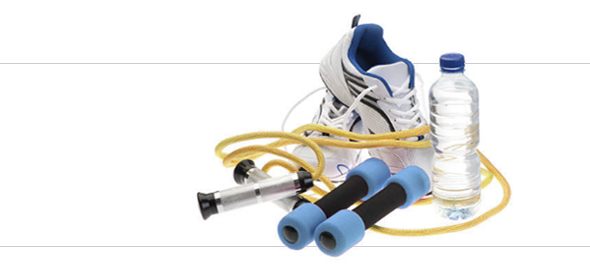
In a new study, researchers investigated the most effective combination of exercises to increase longevity. They used data from the U.S. National Health Interview Survey. A total of 500,705 participants were followed for a median of 10 years, from 1997 to 2018. Data were analyzed in 2022.
The researchers evaluated several combinations of moderate cardio exercises, vigorous cardio exercises, and muscle-strengthening exercises. They found that balanced levels of each exercise combined may be associated with optimal reductions in mortality risk. Higher-than-recommended levels of moderate cardio exercise and vigorous cardio exercise may further lower the risk of cancer and all-cause mortality, respectively.
A surprising finding of the study was that twice the amount of vigorous cardio exercise was associated with a decreased risk of all-cause mortality, but twice the amount of moderate cardio exercise was associated with a reduced risk of cardiovascular and cancer mortality.
“Moderate physical activity can be sustained for longer periods than vigorous physical activity and muscle strengthening activity. It can be, therefore, a larger contributor to physical activity-related energy expenditure and weight maintenance or weight loss. Moderate physical activity can contribute to the maintenance of muscle mass as we age,” said Professor Emmanuel Stamatakis, co-author of the study.
Stamatkis went on to explain that maintaining muscle mass helps prevent “dozens of chronic conditions,” such as type 2 diabetes and cardiovascular disease. Muscle strengthening exercises can also help prevent falls that can result in fractures, loss of mobility, and loss of independence as you age.
“Such conditions and events are often treated as ‘age-related’ diseases, when in reality, they are the result of the population being chronically inactive with little muscle mass to support healthy metabolic function and sarcopenia,” said Prof. Stamatakis.
A 2022 study showed similar results. Researchers collected data on more than 150,000 men and women, representing 10 cancer centers across the country. They found that while any amount of exercise improved overall health, those whose weekly regimens combined cardio with one to two days of muscle strengthening were 41 percent less likely to die during the study’s trial period from any cause, except cancer, compared to those who didn’t exercise at all. Those who just stuck with aerobic activity alone reduced their risk by 32 percent and those who avoided cardio altogether, choosing weightlifting alone reduced their risk by 9 percent.
“We are very fixated on cardio exercise and there is a benefit, but especially so when cardio is paired with at least two days a week of full-body strength training,” said lead author Jessica Gorzelitz, PhD.
She added that the results showed a significant benefit among elderly adults, since the average age in the study was 71 years. Gender also played a role. While the association was consistent for race, ethnicity, and lifestyle habits, the women benefited more from exercise than the men.

You Can Beat Prostate Cancer: And You Don't Need Surgery to Do It – Second Edition
Amazon Ranking and Reviews
Bob’s book is No. 3 on Amazon’s list of more than 6,000 books on a search for “prostate cancer.” Dr. Patrick Walsh’s book takes the top two spots – one for the paperback and one for the audio!
Bob’s book has 234 reader reviews – most with a five-star rating. Below is an excerpt from a review by “michaelchitty” from the United Kingdom.

A Must-read. Reassuring, helpful, informative. If you’ve been diagnosed with prostate cancer, read this book. It’s clearly written with much analytical information on the various traditional treatments with their significant disadvantages and clear information on the less damaging but equally, if not more, effective treatment option of proton therapy. The author highly recommends you consider ALL treatment options before taking action, not just the ones offered to you by your urologist or surgeon.

Was Bob's Book Helpful to You?
If Bob’s book was helpful to you and you’d like to help others find it on Amazon, please write a review. Book reviews help boost the book’s visibility within Amazon’s search results for users looking for information on prostate cancer treatments and/or proton therapy.
Proceeds from book sales are used to help fund our efforts and to support proton therapy research.

Last Month’s Brain Teaser
Ignoring the area code, a little boy’s phone number is 741-5963. He’s able to remember it by thinking of just one letter in the alphabet. Which letter?
Answer:
He simply remembers the letter “N,” which is the shape formed by his number on the phone keypad.
 Winner:
Winner:
The winner is from Colorado Springs, CO, and wishes to remain anonymous. But we had to include an excerpt from the thoughtful message he sent us:
You guys have been doing this report for a long time and I’ve been reading it faithfully. I want you to know the information you include has always been, and continues to be, truly valuable to us former prostate cancer patients. You and your dad are fulfilling a God-given purpose. Thank you.

New Brain Teaser
A man has a wooden pole that’s 13 feet long, which he wishes to mail, but post office regulations stipulate that no parcel can be longer than 12 feet. The pole is all one piece, and he can’t shorten it. What does he do?
Send your brain teaser answer to [email protected] for a chance to win a signed copy of Bob Marckini’s second edition book, You Can Beat Prostate Cancer.

Five Things to Ponder…
- Common sense is like deodorant. The people who need it the most never use it.
- It’s not my age that bothers me – it’s the side effects.
- I’m not saying I’m old and worn out, but I make sure I’m nowhere near the curb on trash day.
- As I’ve gotten older, people think I’ve become lazy. The truth is I’m just being more energy efficient.
- Turns out that being a “senior” is mostly just Googling how to do stuff.

Real Headlines
- Something Went Wrong in Jet Crash, Expert Says. Really?
- Police Begin Campaign to Run Down Jaywalkers. Now isn't that taking things a bit far?
- Miners Refuse to Work after Death: Talk about lazy!
- War Dims Hope for Peace: I can see where it might have that effect.
- If Strike Isn't Settled Quickly, It May Last Awhile. You think?
- Cold Wave Linked to Temperatures. Who would have thought!

On Aging
- “Old age comes at a bad time.” – San Banducci
- “The older I get, the more clearly I remember things that never happened. – Mark Twain
- “You spend 90 percent of your adult life hoping for a long rest and the last 10 percent trying to convince the Lord that you’re actually not that tired.” – Robert Brault
- “Old people shouldn’t eat health foods. They need all the preservatives they can get.” – Robert Orben
- “It’s paradoxical that the idea of living a long life appeals to everyone, but the idea of getting old doesn’t appeal to anyone.” – Andy Rooney
- “The older I get, the better I used to be.” – Lee Trevino

Did You Know ...
- The Spanish national anthem has no words. The “Marcha Real” is one of only four national anthems in the world (along with those of Bosnia, Herzegovina, Kosovo, and San Marino) to have no official lyrics.
- Before we had toilet paper, Americans used corn cobs. There’s no way that was comfortable.
- The Statue of Liberty was once a lighthouse. About a month after the statue’s 1886 dedication, it became a working lighthouse for 16 years, with its torch visible from 24 miles away.
- British military tanks are equipped to make tea. If the crew needs hot tea or coffee, they can just reach for the boiling vessel inside the tank.
- A blue whale’s heartbeat can be heard over two miles away. And their hearts weigh almost 400 pounds!
- Queen Elizabeth II was a trained mechanic. As a teenager, Queen Elizabeth II joined the British employment agency at the Labor Exchange and learned about truck, engine, and tire repair.

Quote of the Month:
“Empty pockets never held anyone back. Only empty heads and empty hearts can do that.” ─Norman Vincent Peale


The Ultimate Test of Love
John Blanchard stood up from the bench, straightened his Army uniform and studied the crowd of people making their way through Grand Central Station. He looked for the girl whose heart he knew, but whose face he didn’t… the girl with the rose. His interest in her had begun 13 months before in a Florida library. Taking a book off the shelf, he found himself intrigued, not with the words of the book, but with the notes penciled in the margin… the soft handwriting reflected a thoughtful soul and insightful mind. In the front of the book, he discovered the previous owner’s name – Miss Hollis Maynell.
With time and effort, he located her address. She lived in New York City. He wrote her a letter introducing himself and inviting her to correspond. The next day he was shipped overseas for service in World War II. During the next year and one month, the two grew to know each other through the mail. Each letter was a seed falling on a fertile heart. A romance was budding.
Blanchard requested a photograph, but she refused. She felt that if he really cared, it wouldn’t matter what she looked like. When the day finally came for him to return from Europe, they scheduled their first meeting – 7:00 PM at Grand Central Station in New York. “You’ll recognize me,” she wrote, “by the red rose I’ll be wearing on my lapel.”
So, at 7:00 John was in the station looking for a girl whose heart he loved, but whose face he’d never seen.
I’ll let Mr. Blanchard tell you what happened…
“A young woman was coming toward me, her figure long and slim. Her blond hair lay back in curls from her delicate ears; her eyes were blue as flowers. Her lips and chin had a gentle firmness, and in her pale green suit she was like springtime come alive.
“I started toward her, entirely forgetting to notice that she was not wearing a rose. As I moved, a small, provocative smile curved her lips. “Going my way, sailor?” She murmured.
“Almost uncontrollably, I took one step closer to her, and then I saw Hollis Maynell. She was standing almost directly behind the girl. A woman well past 40, she had graying hair tucked under a worn hat. She was more than plump, her thick-ankled feet thrust into low-heeled shoes. The girl in the green suit was walking quickly away. I felt as though I was split in two, so keen was my desire to follow her, and yet so deep was my longing for the woman whose spirit had truly companioned me and upheld my own.
“And there she stood – her pale, plump face was gentle and sensible, her gray eyes had a warm and kindly twinkle. I didn’t hesitate. My fingers gripped the small worn blue leather copy of the book that was to identify me to her. This would not be love, it would be something precious, something perhaps even better than love… a friendship for which I had been and must ever be grateful.
“I squared my shoulders, saluted and held out the book to the woman, even though while I spoke, I felt choked by the bitterness of my disappointment. “I’m Lieutenant John Blanchard, and you must be Miss Maynell. I am so glad you could meet me. May I take you to dinner?”
“The woman’s face broadened into a tolerant smile. “I don’t know what this is about, son,” she answered, “but the young lady in the green suit who just went by, she begged me to wear this rose on my coat. And she said if you were to ask me out to dinner, I should tell you that she is waiting for you in the big restaurant across the street. She said it was some kind of test…”
It's not difficult to understand and admire Miss Maynell’s wisdom. The true nature of a heart is seen in its response to the unattractive.
“Tell me whom you love,” Houssaye wrote, “And I will tell you who you are.”
Low PSAs to all,
Bob Marckini and Deb Hickey
*Click here for the printable PDF version of this newsletter.
NO MEDICAL ADVICE: Material appearing here represents opin1ions offered by non-medically trained laypersons. Comments shown here should NEVER be interpreted as specific medical advice and must be used only as background information when consulting with a qualified medical professional.



